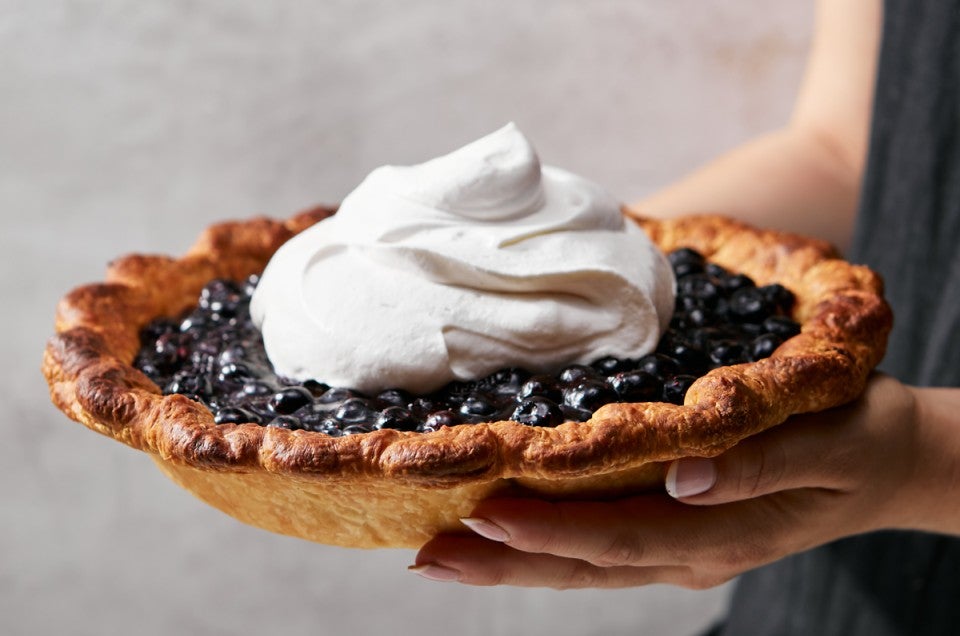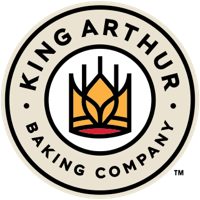Prevent soggy bottoms in pies with these baker secrets
Top tips from Dorie Greenspan, Stacey Mei Yan Fong, and other amazing bakers.


Soggy bottoms — they’re the bane of every pie baker. Because who wants to spend hours laboring over a pie, only to discover, upon slicing it, that it has a pale, flabby bottom crust instead of a crispy, golden brown one?
To ensure this never happens to you, we asked our favorite expert pie bakers for their tips on how to prevent soggy bottoms.
A soggy bottom crust happens when the wet filling of your pie soaks into the raw pie dough beneath before it’s had a chance to set, causing it to become sodden and gummy. This is particularly problematic with both fruit pie and custard fillings because they have high moisture content.
To prevent it, you need to either create a barrier between the wet filling and raw pie dough, or ensure the pie dough browns and sets before the filling has a chance to soak it. Or both!
Here are options that bakers swear by:

“I love a metal pie pan,” says Stacey Mei Yan Fong, author of 50 Pies, 50 States. Because of their thin size and excellent heat conduction, “metal pie pans almost always guarantee an evenly baked pie.” (Learn more: From metal to glass to ceramic, how does your pie pan affect your crust?)
“Whenever it’s possible, I prebake the crust,” says cookbook author and famed baker Dorie Greenspan. “It’s such a good way to keep the bottom crisp and tasty.” This works best with single-crust pies, like Pecan Pie, Pumpkin Pie, and Chess Pie.
Baker Keia Mastrianni of Milk Glass Pie in western North Carolina agrees: “I always advocate for prebaking a single pie crust, especially for custard-based pies. Prebaking provides insurance against soggy bottoms during a low and slow bake, which custard pies demand.”

Pastry chef Susan Reid extols the virtues of baking your pies like pizza — in other words, baking them on a preheated baking stone. The blast of concentrated heat the stone delivers to the pie ensures the bottom crust sets before the liquid from the filling soaks in and makes it gummy. Try this technique for prebaked pie crusts and filled pies.
If you don’t have a baking stone, follow Dorie’s advice: “I put my pie plate on a baking sheet — it catches the drips, but it also helps to concentrate the oven’s heat on the base of the pan.”

Lining the bottom of your pie crust before adding the filling is a go-to tip for many bakers. Keia likes to use a thin layer of frangipane, which “adds a dynamic textural element to pies but also acts as a practical barrier for excess fruit juices.”
King Arthur baker PJ Hamel also recommends almond paste for the bottom of apple pies, rolled into a disk and settled onto the crust before you add the apples.
This tip comes from Dorie, who says: “Brushing the prebaked bottom crust with beaten egg white before filling your pie is helpful, as is brushing it with melted chocolate — both make good raincoats, one more flavorful than the other.” PJ particularly recommends using melted chocolate when making pecan pie for a candy-inspired flavor pairing; brush the melted chocolate over the bottom of the crust (either prebaked or not), let it cool and harden, then add the filling and bake.

Every baker I talked to — Stacey, Dorie, Keia, and PJ — recommended this simple tip: using crust dust. “Before you add your pie filling, mix together about a teaspoon of all-purpose flour and a teaspoon of white granulated sugar, then dust the mixture on the bottom of your pie crust,” recommends Stacey. “This mixture, affectionately called ‘crust dust,’ creates a nice moisture barrier between your filling and the crust itself.” Keia uses this most often with apple pies, but it will work with just about any fruit filling.
Variations of crust dust abound, too. In her book, Baking at the 20th Century Café, pastry chef Michelle Polzine suggests using a dusting of fine cookie or cake crumbs as a moisture barrier; she notes that you can use whatever you have that might be harmonious in flavor — gingersnaps, vanilla wafers, shortbread, plain (unseasoned) fine breadcrumbs, graham crackers, etc.

PJ likes to add a simple homemade praline spread — ground pecans, butter, brown sugar — to the bottom of her pumpkin pies. Simply press into the bottom of the crust before adding the custard filling. The result is not only a pie without a soggy bottom: The praline adds a nutty, sugary crunch hidden in the bottom of every slice.
To make, simply whirl together 1/3 cup (37g) toasted pecan pieces, 1/3 cup (71g) brown sugar, 2 tablespoons (28g) soft or melted butter, and 1/8 teaspoon salt in a blender or food processor. Spread the resulting paste in the bottom of your crust, then pour in the filling and bake.
If you’re getting ready for pie season, find a collection of go-to recipes in our New Classics: Thanksgiving Pie collection.
And for more tips to nail the perfect pie, see our own Kye Ameden walk through 4 Tips for Failproof Pie Dough:
Cover photo (Fresh Blueberry Pie) by Rick Holbrook.



November 17, 2023 at 1:32pm
In reply to you just spent a whole… by Kim (not verified)
Hi Kim, not all pumpkin pie recipes call for partially prebaking the crust, but this is an option you can add, if you're concerned about a soggy bottom. Here are further tips for how to prebake your crust for this type of pie.
November 12, 2023 at 2:01pm
These are great suggestions!
Love King Arthur flours etc
November 12, 2023 at 12:09pm
I avoid the soggy bottom crust by baking the pie on the bottom rack of my oven at 425° for 15 minutes and then lowering the temp to 350° for another 50-60 minutes or however long to finish baking the pie. I use pyrex glass pie plates. Additionally, I put the pie in the oven immediately after putting in the filling. Have the top crust rolled out and ready to go, fill the pie, cover with the top crust and put directly in the pre-heated oven.
November 13, 2023 at 5:31pm
In reply to I avoid the soggy bottom… by LindaZV (not verified)
Thanks for sharing your own tips, Linda!
November 12, 2023 at 12:07pm
I don't have any problem making a pretty decent pie crust and I do use a metal pie pan but the other day I made a pecan pie and the crust stuck to the pie pan. I've not had this problem very often. Also I do not pre bake my pie crusts which I do have problems with. So my questions: Why would my crust stick to the pan and how do I prevent that in the future? And whenever I've pre-baked a crust it becomes puffy and slides down the sides of the pan even though it is weighted and pressed well onto the sides. Thanks for any tips!!
November 13, 2023 at 5:20pm
In reply to I don't have any problem… by Denise (not verified)
Hi Denise, if some of your pecan filling leaked to the bottom of you pie pan, this could cause it to stick. But don't worry, PJ has you covered! She recommends greasing the pie pan with baking spray in this blog post, and walks you through how to successfully blind bake your pie crust in this one.
October 4, 2024 at 12:07am
In reply to I don't have any problem… by Denise (not verified)
The crust may have a bit too much fat.
I had this happen a couple of times and I watched it slither down unbelieving my eyes.
I use dried beans and foil now and fill the beans to the bottom edge of the pie crust edge. I also increase the amounts of ingredients in order to have a decent crust edge and be able to secure it on the edge of the plate.
November 10, 2023 at 7:54pm
If you do an egg wash on the bottom crust, how long would you bake it before adding filling and top crust? Would you need to use pie weights to avoid shrinking?
November 13, 2023 at 3:27pm
In reply to If you do an egg wash on the… by Laura (not verified)
Hi Laura, the advice Dorie shares here is to brush the prebaked pie crust with beaten egg white after it has been baked. So, allow the crust to cool, brush with egg white, and then fill the pie.
November 10, 2023 at 10:40am
Any suggestions for a savory two crust pie? I made a delicious chicken pot pie, and the bottom crust was so soggy.
Pagination